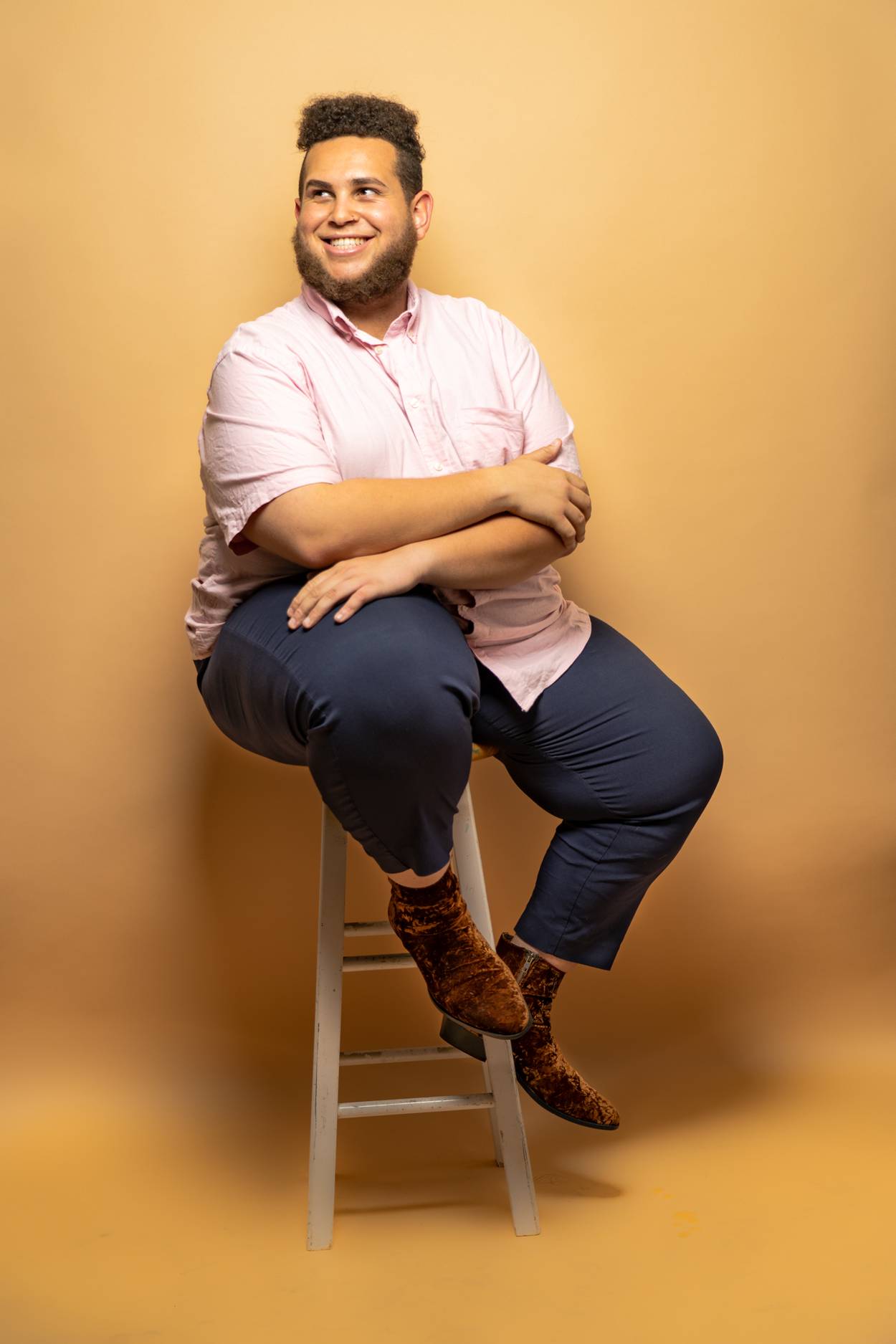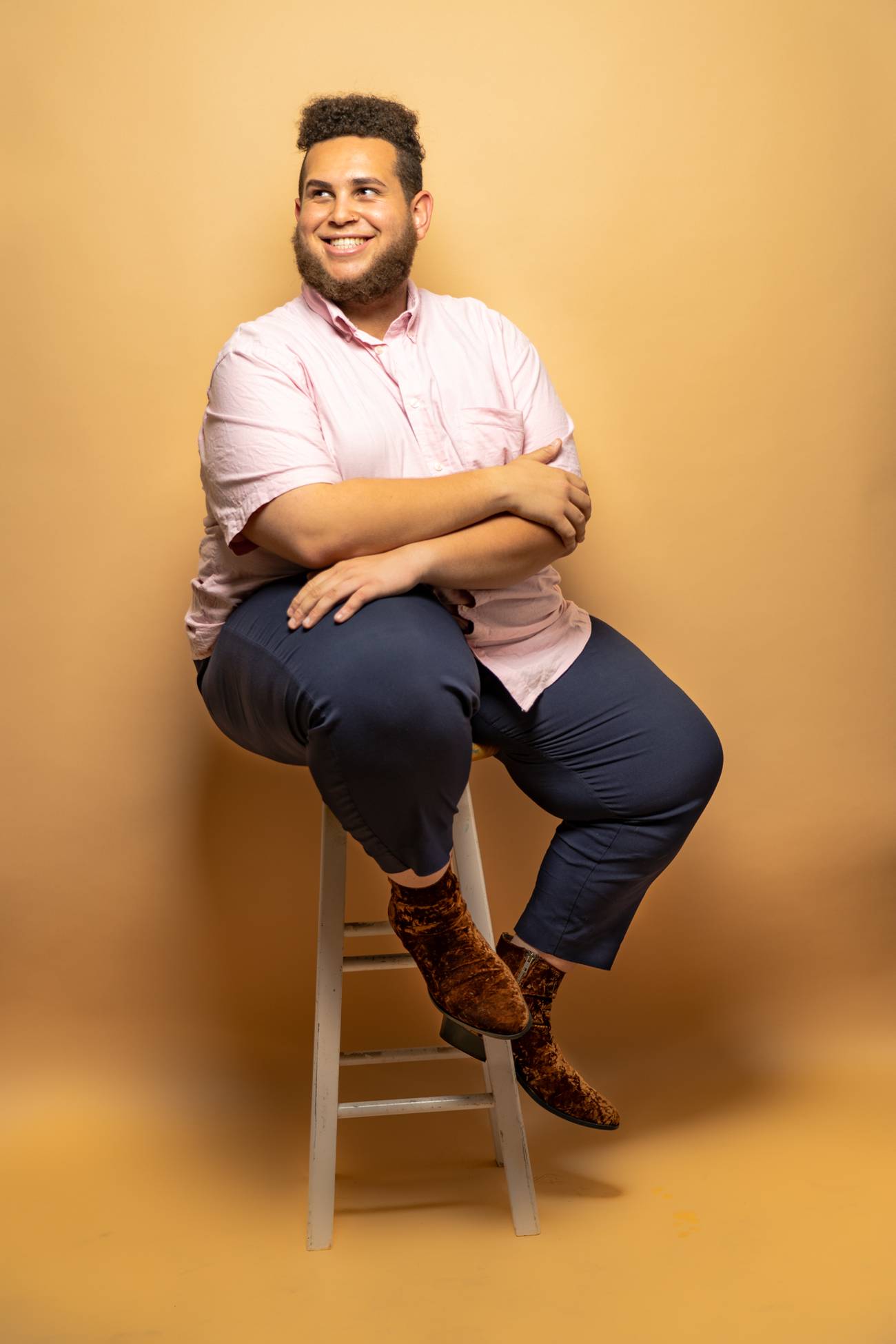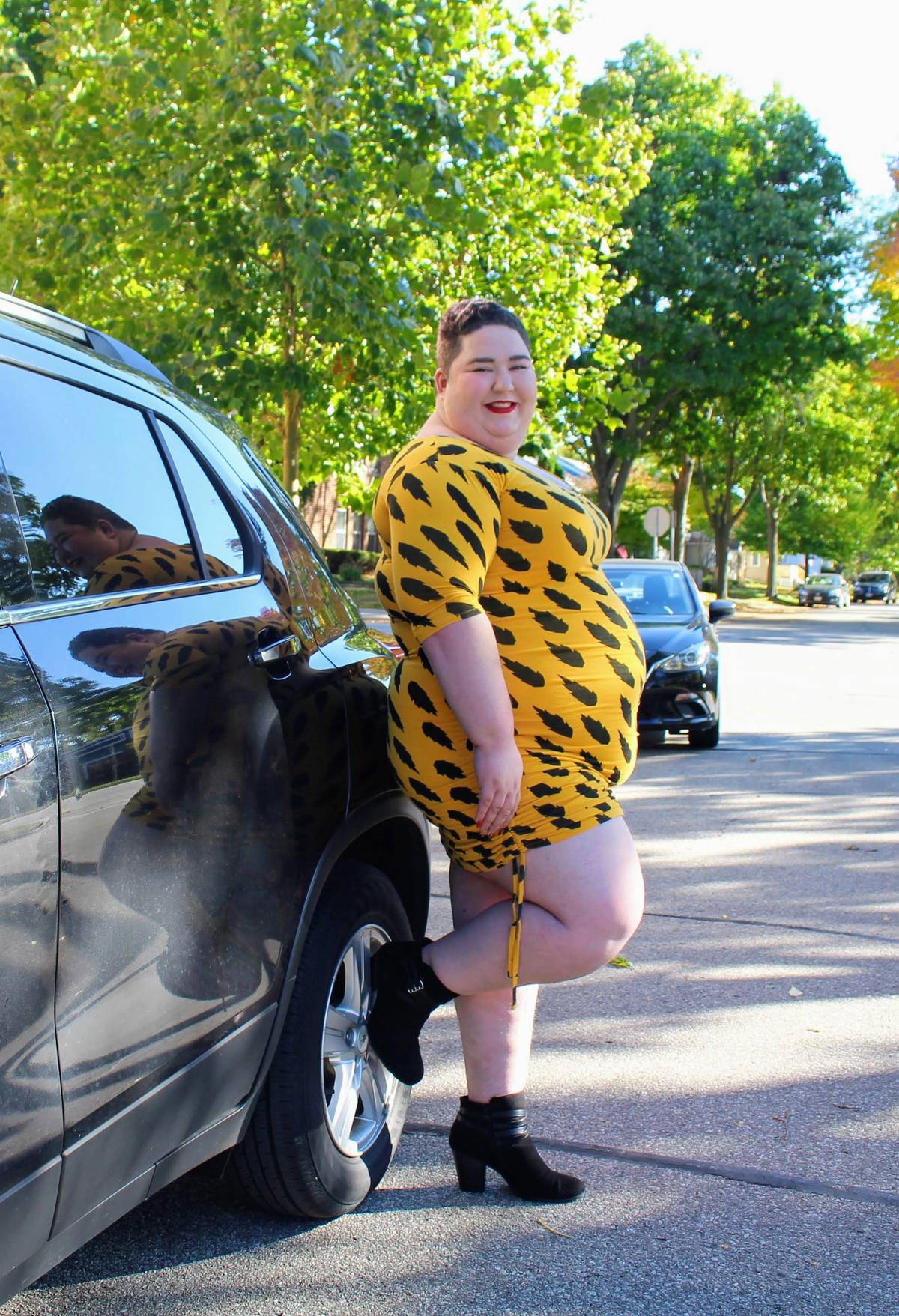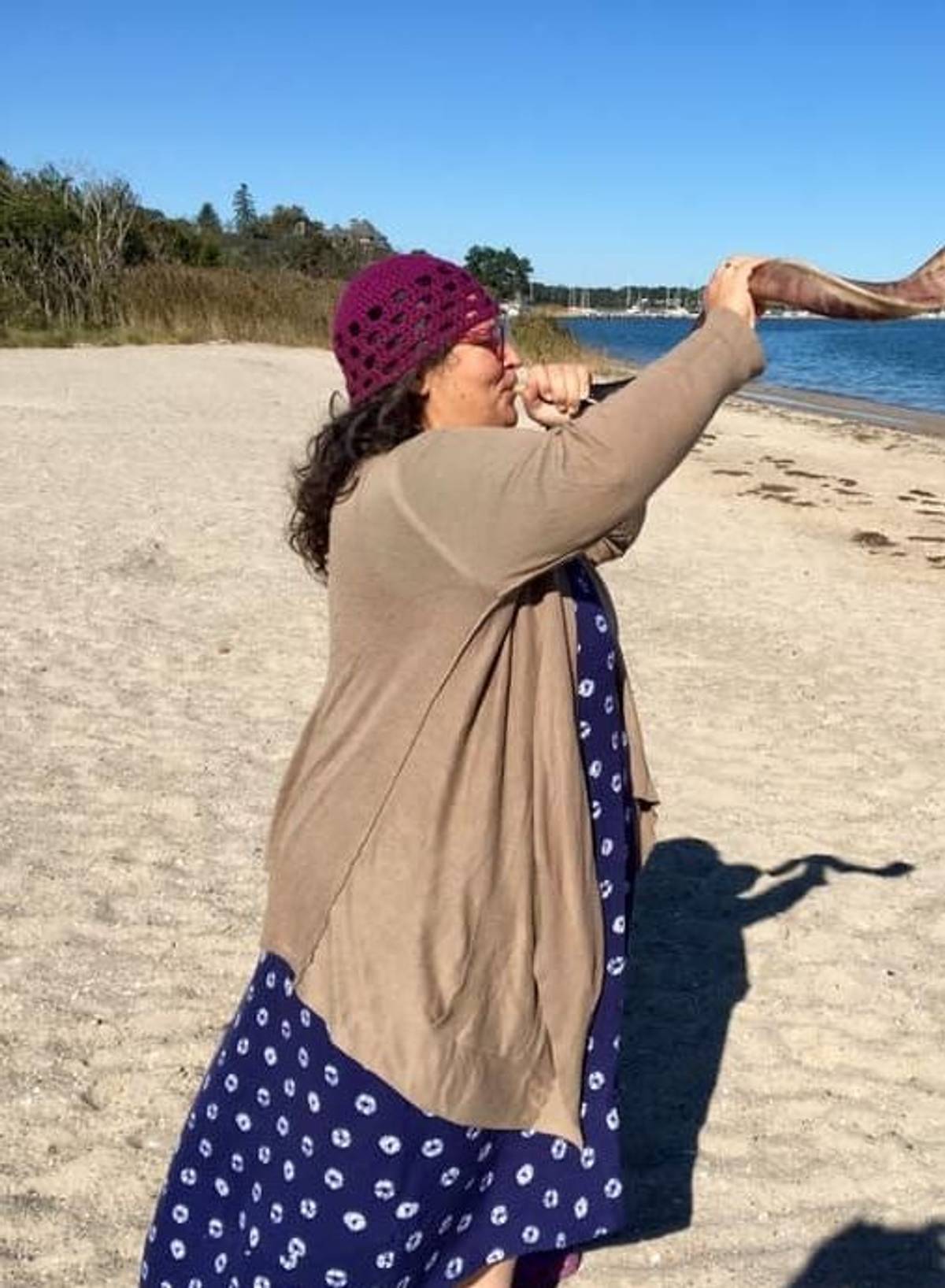Fat Liberation’s Jewish Past—and Future
A new wave of activists advocates for legal and cultural change




Jordan Daniels is thriving. But the medical establishment categorizes him as morbidly obese, as if his weight were a problem. “I’ve been fat my whole life,” said the 25-year-old fat-liberation activist and Instagram star, who lives in a “Moishe Pod” in San Diego. “Being fat is truly just being a person who is fat. I was having to prove I was a worthy human being despite being fat.”
Daniels is part of the next wave of Jewish fat liberationists. They reject diet culture, embrace size, and advocate for the civil rights of all bodies. And they feel the Jewish community, in all its diversity, needs to make space for them. There are cues to take from these activists, who argue that compassion, intersectional liberation, and self-love are infinitely more important than attempting to starve, shrink, or change a body. “We are rendered the punchline, or the sidekick, or the hypersexual obnoxious friend,” said Daniels. These activists today are advocating for their bodies and their right to be loved, to take up space, to receive proper medical care and respect, and to defy American norms of anti-zaftig life.
“Diet culture is idolatry,” said Jerusalem-based Rabbi Minna Bromberg, who calls fat liberation her rabbinate. She tried various diets starting at the age of 7, but as she writes on her blog—on a site she founded, called Fat Torah: “Unsurprisingly, none of them were particularly ‘successful’ in helping me lose weight, which is such a good thing since I was, after all, meant to be growing.”
Bromberg’s “Fat Torah Manifesto”—a riff on fat liberation’s radical beginnings—includes the demands that we end weight stigma in Jewish communal life and train Jewish professions to “confront fatphobia wherever they encounter it (including in themselves).”
“The internalization of American beauty ideals impacts behavior,” said Bromberg. “‘Zaftig’ was not usually an insult for Ashkenazi Jews. Size and shame linked with time. Weight stigma is a particularly powerful teacher around how … tikkun halev [innermost healing] and tikkun olam [world healing] are inseparable.”
Before acceptance, and then liberation, many fat liberationists like Bromberg began their journeys with a childhood of deprivation diets designed to fail by the diet industry. “My mother always had me trying a ‘healthier diet’ like Weight Watchers, Optifast,” said Daniels. “None had a long-lasting effect.”
“For me it began when I was 15 years old and I stopped dieting,” said early fat liberationist Judith Stein of Oakland, California. Her New Haggadah is included in the collection at the National Museum of American Jewish History in Philadelphia and she was involved with the Boston Women’s Health Book Collective, which in part led to the inclusion of fat feminism in Our Bodies, Ourselves. “I was from a family where I was harassed. Not denied food. Not put on speed. Not locked in my room. But my mom focused a lot of her time on what a misery I was because I was fat. At 15 I said, ‘no diet.’ It was a fuck you to my parents. I wouldn’t say I loved myself in any way.”
Today’s fat liberationists find intersections within Judaism, from Orthodox to secular.

“Both my parents are big people, plus-size people,” said queer activist Chaya Milchtein of Mechanic Shop Femme, who has amassed an enormous Instagram and web following translating the Hasidism of her childhood into devoted tikkun olam equity practices for fat acceptance—and, of all things, making car mechanics accessible to all bodies, genders, and economic backgrounds. “I grew up a big child in a Hasidic home in un-Orthodox Milwaukee,” she said. “It has impacted how I view the world.”
“It hit home at 15 and a half, when I announced I was ready to be married and my father started looking for shiduchim for me,” Milchtein continued. “Suddenly my weight became a huge problem. The on-paper stats they offered potential suitors included height and weight. Weight became a huge sticking point. ‘You have to lose weight,’ my father told me. I didn’t have a scale so he told me to go to the UPS store and to get weighed on a package scale.”
Her mother enrolled her in a program for obese teens at the local hospital, but to be admitted she had to have a preexisting condition. “Besides being fat, I just didn’t have one. I was healthy,” Milchtein recalled. Her mother wanted her admitted to this program badly, so she had her daughter tested often in an effort to prove she had a health issue affected by obesity. But there wasn’t one.
These activists are part of a larger tradition of fat activists in America, in which Jewish women have played an integral role. In 1969 the National Association to Advance Fat Acceptance (NAAFA), then called the National Association to Aid Fat Americans, was founded to address bias and discrimination against fat people.
In the 1970s, Judith Stein, who originally hails from a Jewish family in South Bend, Indiana, was working on writing from the Fat Underground—a Los Angeles-based, more radical and confrontational alternative to NAAFA—with Judy Freespirit (born Judith Louise Berkowitz Ackerman). Less than a decade after fat feminism’s formal public foundation on June 4, 1967—when Jewish WBAI-FM radio announcer Steve Post staged a public 500 person “Fat-In” protest at Sheep Meadow in Central Park—Stein, Freespirit, and the iconic “Aldebaran” (who chose her singular moniker after a bright red star), along with collaborators like Ariana Manow, Shri Gram, and Gudrun Fonfa, took the helm of the movement.
“There were a lot of Jewish women involved,” Stein said. “We come from a tradition of asking questions and not giving information as truth. With the others in Fat Underground, Aldebaran researched the medical [literature]. They looked at failure rates of diets. Damage done by diets. Lack of clear correlation between fat and ill health—they revealed that the causation was scientifically false. It gave voice to what I had been wrestling with for some number of years.”
In 1978, Fat Is a Feminist Issue was published by British Jewish psychiatrist Susie Orbach, and soon afterward, the Fat Underground’s “Fat Liberation Manifesto” appeared in the April 1979 issue of the radical feminist magazine Off Our Backs. The first four statutes read as follows:
1. WE believe that fat people are fully entitled to human respect and recognition.
2. WE are angry at mistreatment by commercial and sexist interests. These have exploited our bodies as objects of ridicule, thereby creating an immensely profitable market selling the false promise of avoidance of, or relief from, that ridicule.
3. WE see our struggle as allied with the struggles of other oppressed groups against classism, racism, sexism, ageism, financial exploitation, imperialism and the like.
4. WE demand equal rights for fat people in all aspects of life, as promised in the Constitution of the United States. We demand equal access to goods and services in the public domain, and an end to discrimination against us in the areas of employment, education, public facilities and health services.
Fat discrimination, lack of access, and extreme bias in health care were defined as civil rights issues.
A group of women in Iowa City, as well as writers from the Fat Underground and the New Haven Fat Liberation Front, contributed to the classic 1983 compilation of fat activism essays, Shadow on a Tightrope. Marilyn Wann’s Fat!So? emerged later, as well as Hanne Blank’s Zaftig. Eventually the academic field of fat studies was established, ensconced in Foucault and queer theory, with Esther Rothblum and Sandra Solovay’s 2009 Fat Studies Reader. An offshoot, the academic Fat Studies journal, will feature a contribution from Bromberg on Jews and fatness in a forthcoming issue.
“I started the Boston Area Fat Liberation movement because I needed it,” Stein recalled. “In the ’70s and ’80s organizing happened because if we didn’t see what we needed, we made it … I was a 1970s radical feminist. I saw oppression of women about our bodies as a manifestation of sexism. I still do. The oppression of fat people is based on the ways we are not representative of the Northern European WASP stereotype.”
Bromberg recalled dieting groups meeting in Christian spaces, like Overeaters Anonymous meeting in the upstairs of a church, or Weight Watchers with “its dreaded weigh-ins” in church basements.
“My great-grandfather was visiting my grandmother’s house and heard my mother, who was a baby at the time, crying,” Bromberg recounted. “He said, ‘Feed the baby,’ and my grandmother said, ‘it’s not time yet.’” Food in the new American world became less about feeding and filling and more about control and regiments. To, as Bromberg put it, “control the wildness of the Jew.”

This also applies across the board to Black bodies, and other bodies that white American beauty ideals sought to control. “My research,” wrote Sabrina Strings, professor of sociology and author of Fearing the Black Body: The Racial Origins of Fat Phobia in a recent New York Times op-ed, “showed that anti-fat attitudes originated not with medical findings, but with Enlightenment-era belief that overfeeding and fatness were evidence of ‘savagery’ and racial inferiority.”
“It is more than body positivity—which by 2017 became a lot of not-fat white people talking about loving a fat roll,” Daniels explained. “It stems from the 1960s Black queer fat acceptance movement. It is about body positivity related to fat people having less access to health care in the workplace. It is about the less meaningful participation in society as fat people. It is about the racial history of the BMI and its disproportionate impact on Black people.”
Radical Black liberation in the 1960s paved much of the way for Jewish involvement in fat liberation that formally began with Post’s public “Fat-In,” which ushered in the so-called first wave of fat liberation activism in the 1970s and ’80s. In the ’90s, younger radicals began a second wave with their own version of fat liberation: The era of self-published radical fat ’zines included notorious radical fat feminist Kohenet punk rocker Nomy Lamm’s 1991 ’zine, I’m So Fucking Beautiful.
A lukewarm third wave emerged in the 2000s with “real beauty” Dove commercials and the emergence of the Body Positivity movement, a less radical re-appropriation of fat acceptance’s radical origins. The movement once about civil rights for fat bodies was momentarily subsumed into a body positivity movement about inner and outer beauty.
“That was a subculture iteration, and I would argue, a co-opting of what the intention was actually set around fat acceptance,” Daniels explained. “Body positivity has since separated itself, but I think people still conflate the two.”
“Today there is some work to re-radicalize and contextualize this in racial liberation and justice,” said Stein. That leaves us with today’s fat liberationists, a potential fourth wave.
“Fat acceptance isn’t radical,” Stein said, explaining the difference between the fat acceptance and fat liberation movements. Today she is a member of Fat Rose, a group committed to fat activism, disability justice, and fighting white supremacy. “It’s bigger than that. It is tied to deep racism the more one deviates from the WASP European standards the more they are endangered. I understood then as a Jewish person. Now I see it is about white supremacy. Now I see the connections between a lot of social justice movements.”
Simply showing up today as fat and proud has become a radical act when it should, these groups argue, be normalized.
“I live in my body proudly, openly, and without hesitation,” declared Milchtein, whose self-proclaimed “Biggest Queerest Wedding of the Year” was broadcast live to thousands on Aug. 29. “That in and of itself is an act of resistance.”
From the Instagram activist to the radical rabbi, the message is clear: Jewish spaces have a lot of work to do in regard to destigmatizing fat bodies and eradicating fatphobia.
“You don’t regularly see fat Jewish people talk about fat liberation, bar the good work of Michael Twitty,” Daniels lamented. “I want that to change.”
Daniels cited tikkun olam and bezelim elohim as key. Similar to Bromberg, he wants the spiritual, the Jewish honoring of the individual to be imbued in all. “Bezelim Elohim. Why not also for fat folk, Jews of color, Jews of different abilities, Jews with health crises, queer Jews, BIPOC Jews, Indigenous Jews. Aren’t we all created in God’s image, too?”
“All human beings are of unconditional and infinite value,” said Bromberg, who today does advocacy work with synagogues to take fat shaming and anti-fat bias and fatphobia out of sermons and the like. “That’s a theological proposition on its own. Jewish communities and religious communities are meant to be spaces of belonging. Anytime there’s barriers to belonging there’s work to be done.”
Merissa Nathan Gerson is a writer, sex educator, and rape prevention advocate. She teaches Alternative Journalism at Tulane University in New Orleans.